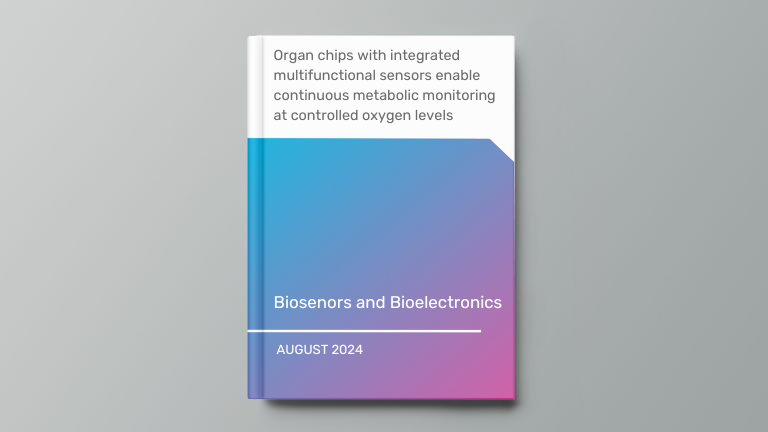Organ Model: Small Intestine & Liver
Application: Organ-on-a-Chip Technology
Abstract: Despite remarkable advances in Organ-on-a-chip (Organ Chip) microfluidic culture technology, recreating tissue-relevant physiological conditions, such as the region-specific oxygen concentrations, remains a formidable technical challenge, and analysis of tissue functions is commonly carried out using one analytical technique at a time. Here, we describe two-channel Organ Chip microfluidic devices fabricated from polydimethylsiloxane and gas impermeable polycarbonate materials that are integrated with multiple sensors, mounted on a printed circuit board and operated using a commercially available Organ Chip culture instrument. The novelty of this system is that it enables the recreation of physiologically relevant tissue-tissue interfaces and oxygen tension as well as non-invasive continuous measurement of transepithelial electrical resistance, oxygen concentration and pH, combined with simultaneous analysis of cellular metabolic activity (ATP/ADP ratio), cell morphology, and tissue phenotype. We demonstrate the reliable and reproducible functionality of this system in living human Gut and Liver Chip cultures. Changes in tissue barrier function and oxygen tension along with their functional and metabolic responses to chemical stimuli (e.g., calcium chelation, oligomycin) were continuously and noninvasively monitored on-chip for up to 23 days. A physiologically relevant microaerobic microenvironment that supports co-culture of human intestinal cells with living Lactococcus lactis bacteria also was demonstrated in the Gut Chip. The integration of multi-functional sensors into Organ Chips provides a robust and scalable platform for the simultaneous, continuous, and non-invasive monitoring of multiple physiological functions that can significantly enhance the comprehensive and reliable evaluation of engineered tissues in Organ Chip models in basic research, preclinical modeling, and drug development.

